Follow Through
Have you ever found yourself slightly overwhelmed in the hunt for the elusive perfect rope? Well I’m not going to lie; I have felt more than “slightly” at times. Heck, sometimes I feel I can barely catch with my rope some days let alone sort through the options that the modern rope industry provides us to really personalize our roping game.
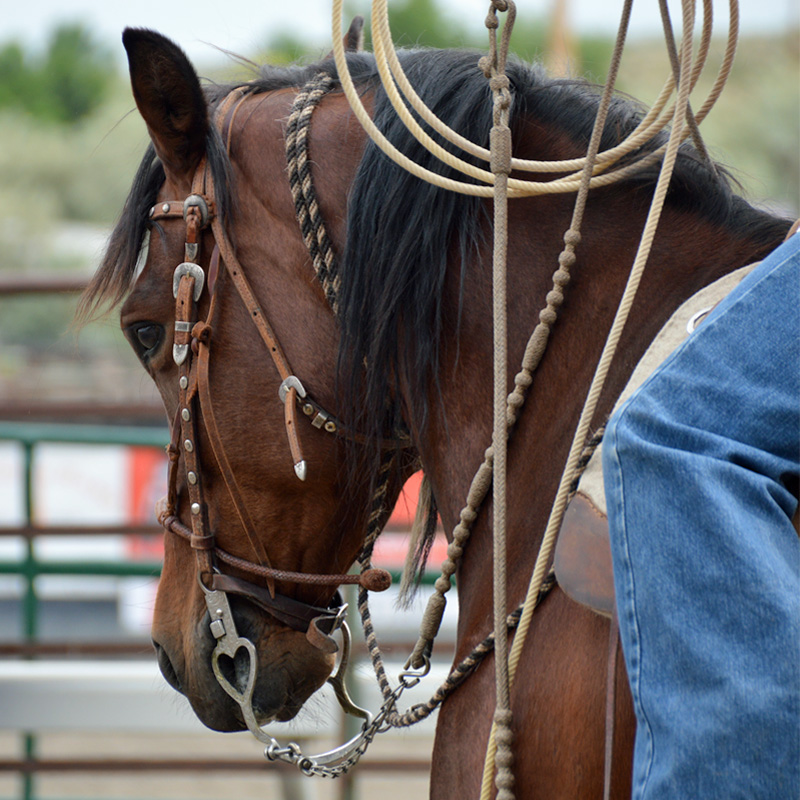
This post is designed to aid in the decision making process of purchasing the right rope through some research and first hand advice from a variety of working and competing ranch ropers. I am not an expert roper, but I have found what works for me is to experiment, ask for advice, watch and learn from others, keep pushing myself to try new things and to practice practice practice at getting better at the things that challenge me. To help with that advice part, I have interviewed a variety of different ropers and have compiled their general top three rope preferences, why they like them, and what they prefer to use them for. Keep in mind that it is nearly impossible to declare a favorite because there are so many variables when it comes to preference, conditions, and uses!
When it comes to an all around using rope, the nylon comes in first the majority of the time. Today’s rope companies have gone above and beyond for producing a plethora of different nylons to custom fit your exact needs. Based on my responses, most people liked a nylon because you can get things done on the ranch; doctoring, branding, etc. but still be fast in town for roping competition. Another HUGE factor is that the nylon, unlike your cotton, drylon, or grass ropes, is not as susceptible to weather conditions. It may lay a bit softer in the heat, harder in the cold and feel a bit “sticky” when wet, but for the most part it is great to use in rain, snow, cold and hot temperatures. Most preferred an extra soft to soft lay so that one can head AND heal comfortably in any given situation. For men and women a 3/8th scant or a 5/16th was by far the favorite diameter size but you can find nylons in larger diameters as well! Women especially preferred the smaller diameter because the rope is not as heavy and there is less in hand to hold. The next favorite was a plain old 3/8th, which is just a hair bigger than the 3/8th scant and considered a great all-around using diameter. Some people felt that the body of a nylon was a preferred quality, that it stayed open while heeling but made great head ropes with out being to bouncy, some thought that three strands tended to break down and lose body quicker than a four strand but others preferred the three stands because it felt better than the four. All in all, the versatility of the nylon makes it a great choice. It is all-around, all weather, and can be custom selected to whatever you want to use it for. When competing, most people make sure they have a nylon with them, when branding its hard not to just grab up your favorite 5/16th and feel great. I personally feel that roping with a nylon makes my roping and horse position more consistent and that when I switch to a poly or a softer cotton I can struggle with catching consistently until I get used to those other types of ropes again. Try one out and see what you think.

As far as being able to use a rope on the ranch and in town, the poly is definitely a cowboy favorite. Correct me if I am wrong, but most people only favored a nylon, in their top three preferred ropes, slightly more than their poly’s. Polyester, poly for short, is a heavier fiber than nylon making it a bit of a weightier choice for ropes. The added weight makes it great for roping outside and, as one person commented, “It’s the perfect rope for when you really want to send it!” For roping and doctoring outside it is really nice to have a poly for roping larger animals too, ropers mentioned that it holds up really well and takes a lot of pressure in order to make it break. Like the nylon, rope companies today have a huge range of poly ropes to choose from. The variety of styles makes it so one can really fine-tune their preferences and once a roper finds a certain style they like, they seriously consider buying the entire spool so as to never run out! Also like the nylon, a major selling point is that the poly does well in in-climate weather. Cold vs. heat conditions do not seem to affect the poly much, neither does rain nor snow. One complaint came in the form of heeling, users felt that a poly does not stand up as well in the branding trap, which is not to say some people are not wizards at heeling with a poly, its just that in general a poly can lay softer thus making it more difficult to heel… especially for beginners. As far as diameter was concerned, not many people mentioned it, but the ones that did preferred a 3/8th for all around great poly diameter. Once again, try one for yourself, but the poly makes a great outside, branding, town feeling rope.
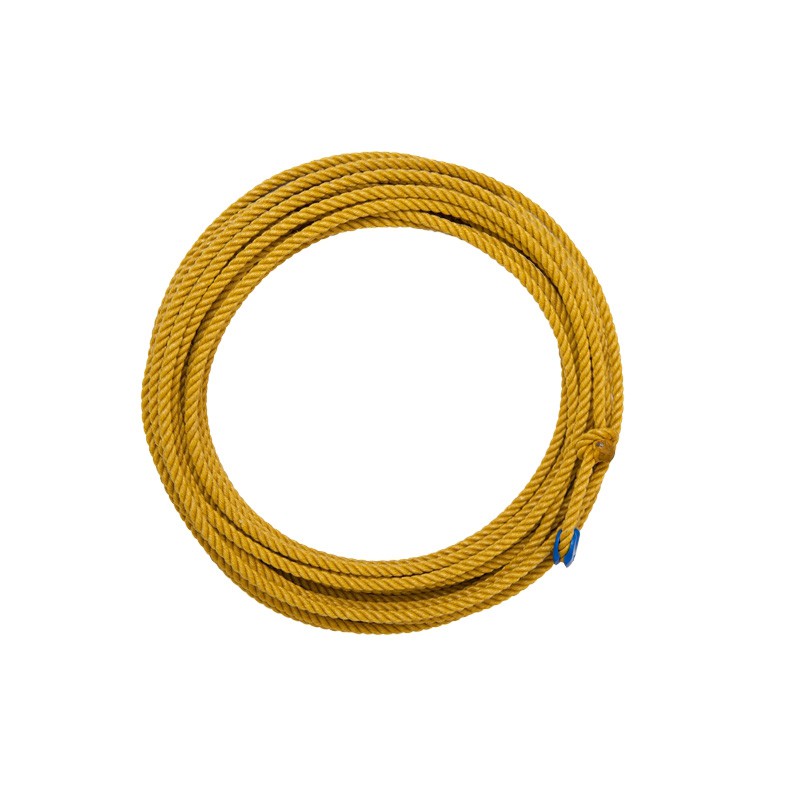
From personal experience, the cotton is a love hate relationship. I have absolutely loved the feel of some cottons and have strongly disliked others. It completely depends on the way a person “treats” their cotton rope. By treatment I mean that you usually have to do something to them before you can go to using it. Some people swear by soaking them in linseed oil and others paint them with house paint. Either way, the general consensus is that after a “treatment” you usually dry them in the sun and run them around a post/ tree/ hitching post or a set of holes drilled in a wood support of some type. By doing this, the rope becomes pliable and smooth giving it almost a poly feel with a little more spring and life. Cottons are great for windy and warm days and they are great for doctoring, branding, and taking to town. As I have mentioned previously, they are not good for cold or wet weather, even treated, the cotton absorbs a lot of moisture making them stiff and hard to use. One complaint is that if wore out, they can break easier when roping large critters! Which I have seen first hand several times, but once you get over the sting of getting whapped in the back or butt, you can re-tie your hondo and go right back to using your newly adjusted, stretched and shorter cotton rope! This being said they will last a very long time if treated and taken care of correctly.
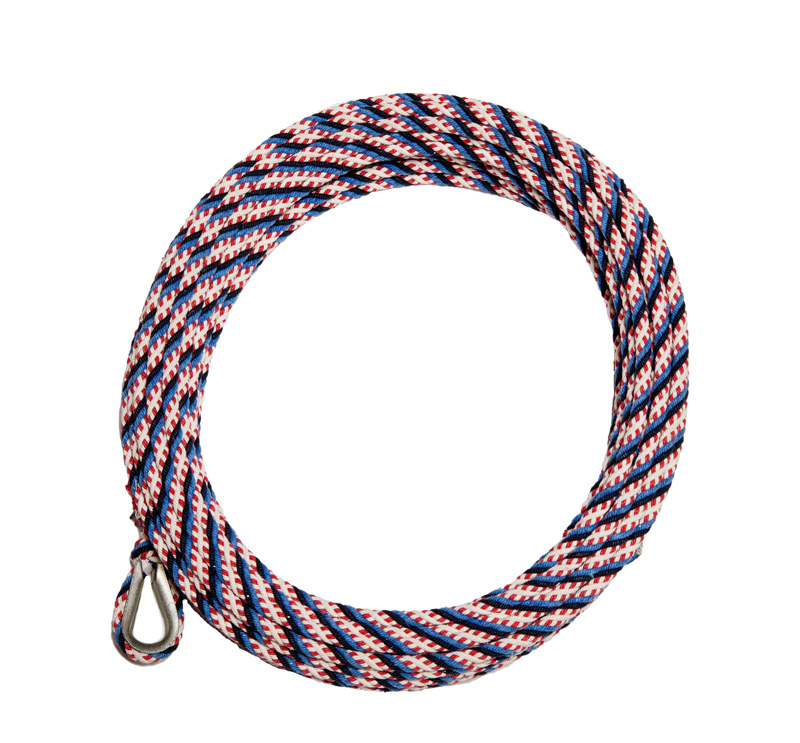
Huh? What the heck is a drylon? Well to be scientific, it is a wax free, bonded polyester jacketed nylon rope and it is one of our options for modern roping.
It is extremely durable and people that use them and like them say that it feels the same every time you go to pick it up and use it. They also mention that the more you use it the better it feels! It is a fast rope and can be hot on the horn perhaps making it not the best rope for beginners. Like a cotton it is affected by weather and it absorbs water, making it stiffen quite a bit. Another user mentioned that the drylon did not have as much bounce but still felt great when healing. So not as much information on the drylon, so try it out and let us know!
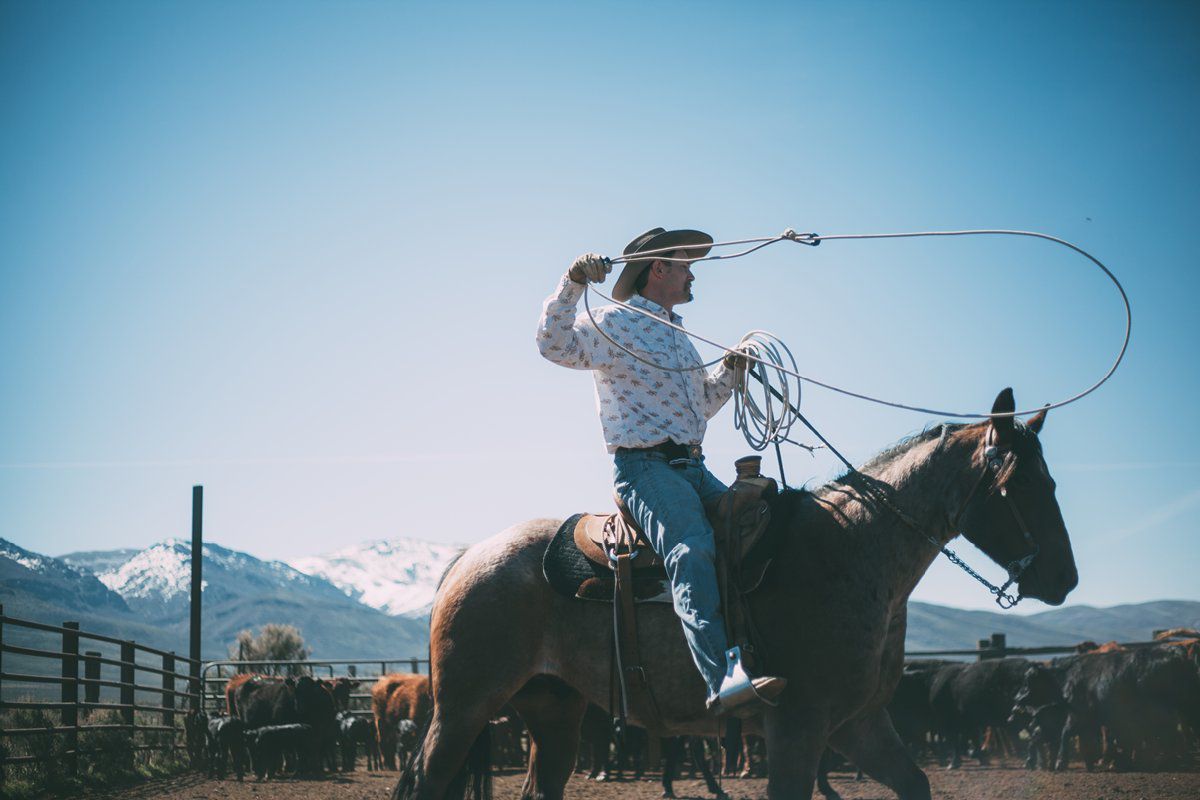
The reata (braided rawhide)
Still very popular in a lot of different roping venues, the reata is more of a traditional cultural rope that is usually such an art form it gets hung on the wall or taken to ropings that specifically require that a reata be used. There is boatloads of cool information I could share about the art of the reata, but for the purpose of this article I will not go into detail, especially since there are real experts that provide much more valuable info! I have been to the odd branding here and there where some bad cat shows up and kicks butt with their reata!

Grass or magueys. Also still used, the grass rope was developed when rawhide and grass were the only materials around to build ropes out of. People mentioned that they can feel really neat, get really fast on the horn, and can break easier. They also are not consistent in varying weather conditions.
Braided nylon. Not seen as often, one benefit is that it can be used right or left-handed. The guys who use the braided nylon often use them to rope wild cattle. The key to the braided nylon rope is that it’s really tough and meant for those moments when you need a really strong rope.
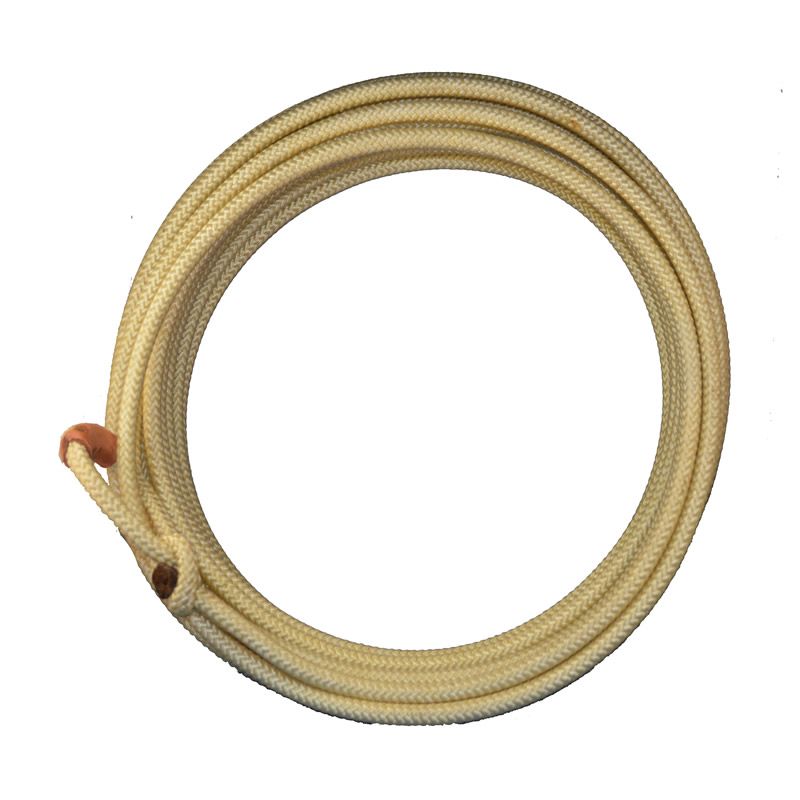
Syngrass. Feel like old timey grass ropes but are made from modern synthetic materials, little to no stretch. More research required!
Finally let me finish with a little discussion on length, lay, and wax. As far as length people like anywhere from 35 feet to 60 feet, it just depends on what you are doing and what you are comfortable with. 39- 42 feet was a common length and was mentioned as being plenty of rope to get things done with because it seemed that if the user had any more, then they would not ride their horse to the correct roping position and that there would be less in hand to hold. Again, it depends on what roping style you have, others like a longer rope for different kinds of shots. 45- 50 feet was the all around length that people mentioned for doctoring, branding, and for use in town. Another thing to consider when debating length is diameter, which I touched on quite a bit when discussing the nylon rope, diameter affects how much you can hold in your hand, increasing or decreasing the length accordingly. To reiterate, for men and women a 3/8th scant or a 5/16th was by far the favorite diameter size. Women especially prefer the smaller diameter because the rope is not as heavy and there is less in hand to hold. The next favorite was a plain old 3/8, which is just a hair bigger than the 3/8 scant and considered a great all-around using diameter. Wax or no wax? Wax adds more weight and can feel great on a brand new rope but the opposite is also true.
What is the moral of the story? Try it for yourself based on an educated guess! Do not get hooked on one thing completely. Technology is constantly changing… you might like something even more than your current favorite and you will not know until you try it! Also, have several options to fall back on no matter what you are doing; keep them in the pickup, trailer, war bag, covered wagon…whatever! If something doesn’t feel good at the moment and you have the opportunity, switch it up and keep in mind that weather can change even your favorite rope.
With that, adieu and happy hunting!
Capriolas Choice in Ranch Ropes can be found here>>> http://capriolas.com/product-category/ropes/
Article Written By: Ceily Rae Highberger
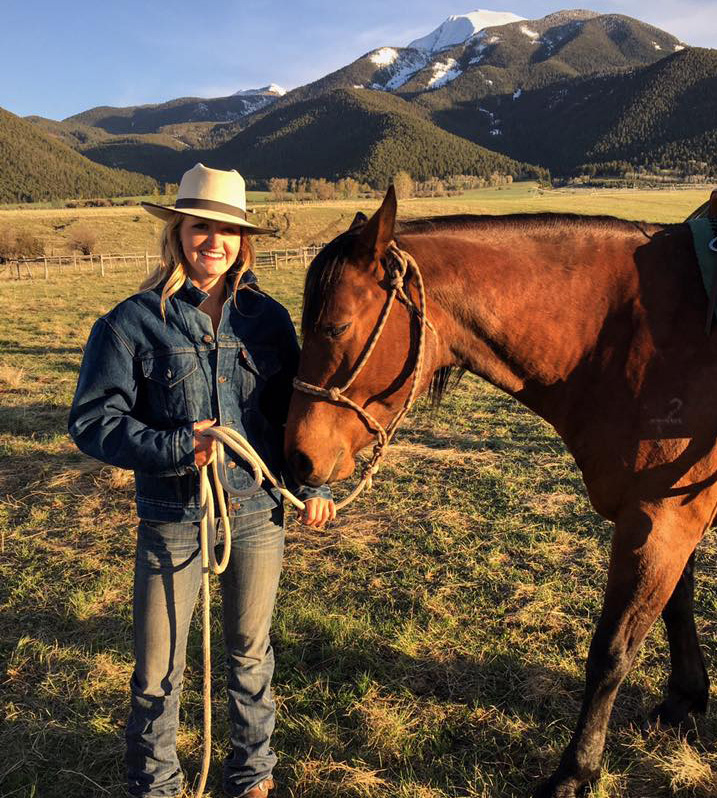
Ceily is a graduate of Montana State University in the field of agriculture and has worked and lived in the great outdoors her entire life. Besides working with horses and livestock, and building her own small cow herd, Ceily Rae’s other passion is being able to document the ranching industry through photography and writing. For more of her work check out ceilyrae.com

